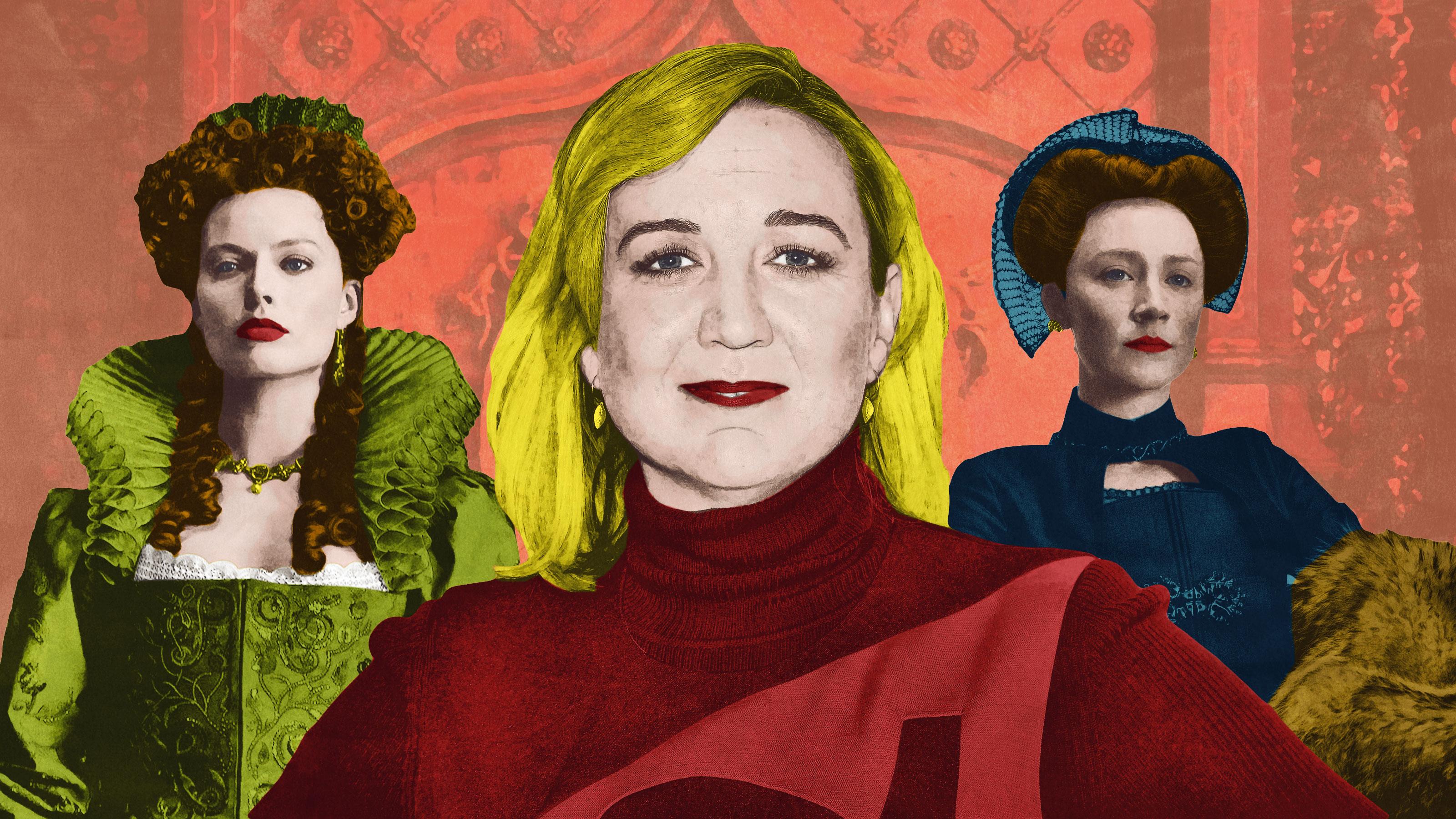
Toward the end of Mary Queen of Scots, Elizabeth I, played by Margot Robbie, looks out at the English countryside from a balcony. “I am more man than woman, now,” she tells her chief advisor. “The throne has made me so.”
Director Josie Rourke can relate, if on a less dramatic level. After eight years as artistic director of the Donmar Warehouse in London and a recent shift towards the big screen, she’s well acquainted with the struggle to create change as a woman in a leadership role. “I think that one of the unfortunate things about power is that sometimes in order to effect it, you have to speak like a man and not speak like a woman,” Rourke tells me one evening, fresh off an international flight and still sharp as a tack. “Sometimes a room will not listen to you when you are your authentic self.” This particular room is filled by five women; we all nod at the same time.
Rourke is at once a seasoned theater veteran and entirely new to filmmaking. Despite a robust theatrical background, including adaptations of Les Liaisons Dangereuses and Coriolanus starring Tom Hiddleston, Rourke had never directed a film before tackling Mary Queen of Scots.
“Josie’s just fearless,” says actor Jack Lowden, who plays Lord Darnley in Mary Queen of Scots. “She’s never fazed by anything, and she’s unbelievably confident in what she does.” Lowden would know—after working with Rourke on this film, he went on to star in one of her final stage productions at the Donmar Warehouse this year, an adaptation of Shakespeare’s “problem play,” Measure for Measure.
The basis for Rourke’s two most recent projects are not exactly new to the zeitgeist. Measure for Measure and the story of Mary and Elizabeth have, over the years, been told countless times—but not, as Rourke points out, by women.
“It’s only recently that women are going into famous stories and getting the opportunity to tell them from a different perspective,” Rourke says. She points to another Donmar production, Phyllida Lloyd’s critically acclaimed all-female Shakespeare trilogy, which combined The Tempest, Henry IV, and Julius Caesar into one theatrical event. “I think what we’re going through is a really necessary period of cultural disruption, as women and people of color start to get their hands on these narratives.”
Rourke brings this appetite for disruption and new cultural ownership to Mary Queen of Scots in a number of ways. The film follows the long-distance power struggle between Queen Elizabeth I and Mary Stuart, as they navigate a host of men determined to challenge their leadership. With Saoirse Ronan in the starring role, a script by Beau Willimon, and a 12-page climactic scene as the two queens finally meet, Rourke had plenty to work with. Beyond obvious themes of female empowerment and oppression, Rourke also introduces a host of queer characters, doesn’t shy away from the female gaze, and casts people of color in historically white roles.
That last practice tends to be more common in theater than film, but casting non-white actors in Mary Queen of Scots was a “no-brainer” for Rourke. Because of her time at the Donmar, she had “an awareness of the gigantic talent pool there was of amazing actors of color. Who, as much as anything else, knew a ton about how to act in this period of history.” Rourke ended up casting Gemma Chan as Lady Bess of Hardwick, Adrian Lester as Lord Randolph, and Ismael Cruz Cordova as David Rizzio, among others.
It’s a refreshingly common sense approach to casting. “We are never, even if we wanted to, able to represent the past in documentary fashion. Because fundamentally, we don’t know.” Rourke says. “You’re always working within relatively limited aesthetic parameters. And therefore to pick one thing as a thing that is not real—when actually what we need is a gigantic acknowledgement that it is, to some extent, all an act of imagination based on what you’ve got—seems to me to be completely crazy.”
Rourke took that act of imagination to another level with this year’s Measure for Measure, as she staged the play twice in one performance—first in a traditional Shakespearean setting, with Lowden as the Duke and Hayley Atwell as the Novice; then again, as Atwell and Lowden swapped roles and the play was transported to the 21st century. The second staging, which sees Atwell’s Isabella as the one in power, works along similar thematic lines as Mary Queen of Scots, examining the societal expectations put on women in power.
It’s not an accident that both of Rourke’s recent projects complement each other so well. Over the course of her Donmar career, much of Rourke’s work has aligned into thematic phases; not that she expects anyone to notice.
“That’s an interesting thing, isn’t it, in the context of a woman artist?” she asks. “I think … what people don’t recognize is auteurship. You’re measured by your competence, rather than measured by a set of themes you are preoccupied by that appear in your work.” Rourke cites her “democracy” phase at the Donmar from 2013 to 2016, which included Coriolanus and Privacy. If it wasn’t clear from Mary and Measure for Measure, she’s currently moved on to “leadership and power.”
The common threads between Mary and Measure for Measure are many. “It’s about the impossibility of power and the cost of that. And it’s about how actually both the play and the film are really an appeal to question the system in which we’re all operating.”
She continues, “I think that the thing about power in this movie and in Measure for Measure is that it is cruel, and violent, and distressingly wieldy when you’re in charge of the room. And it’s subject to abuse but it also corrodes the soul of the individual…. This is really, through both those stories, an examination of that.”
Rourke knows not everyone will like those examinations—Mary has debuted to mixed reviews, and some staunch Shakespeare devotees were shocked and confused by her Measure for Measure reimagining. But her changes have breathed new life into these traditional works, in ways that other directors (read: men) have not.
“People will go, ‘This is inauthentic.’ Or ‘This is untrue,’” Rourke says. “And you go, ‘No, it’s none of those things. It’s just you’ve not heard it this way before.’ It’s your tune, and somebody else is singing it. Of course that feels disruptive, and let’s talk about that. That’s really good; we should have that conversation. That’s what I’m seeking to do in everything that I do. Just spark the cultural conversation. I’m just gonna throw you for a loop. Let’s see what that builds up, and let’s see how that thrill and discomfort actually produce a really great cultural moment.”

